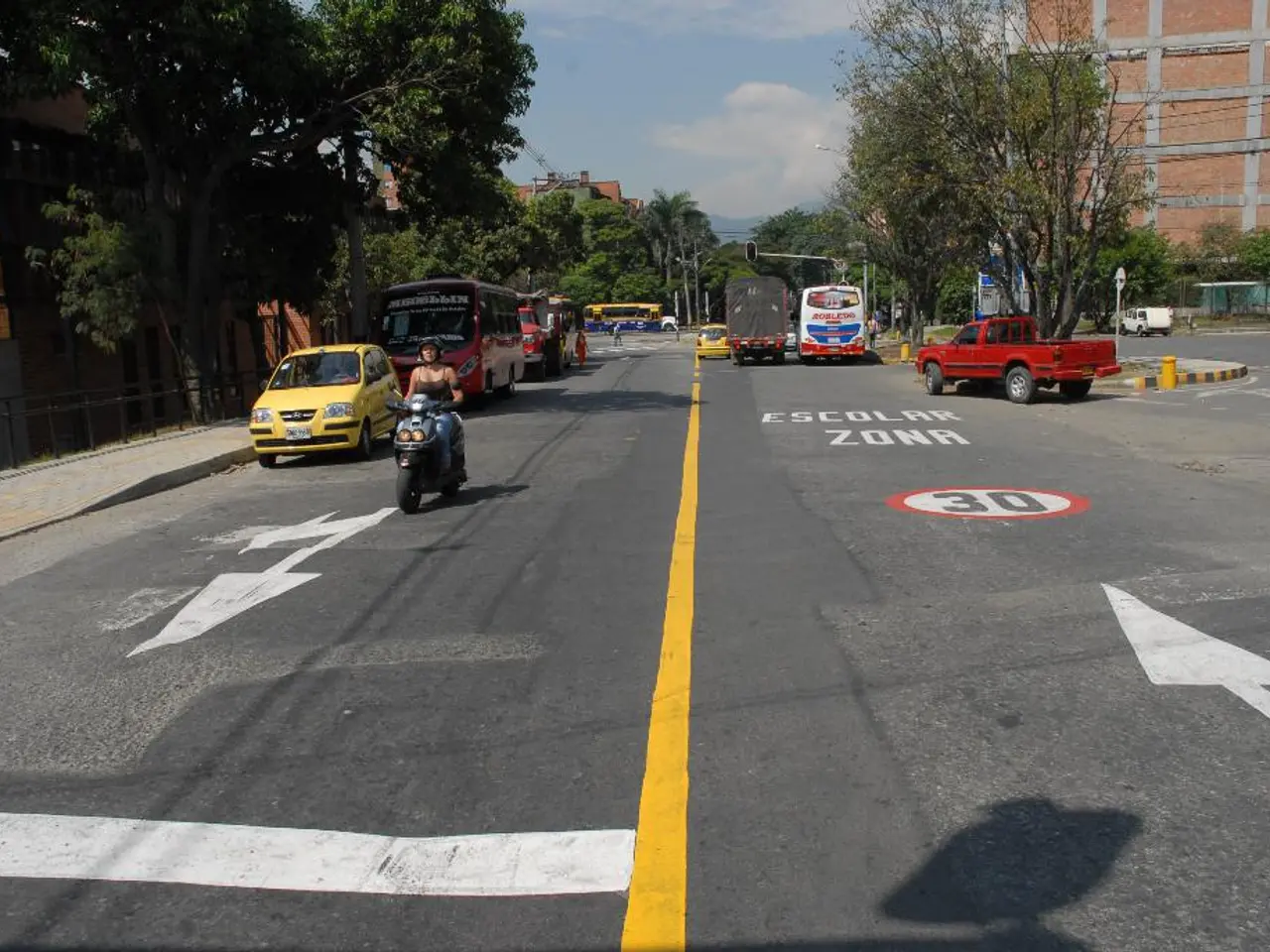Heavy downpours pose a risk of flash floods for millions residing along the Eastern seaboard
The East Coast of the United States is gearing up for a wave of summer storms this Monday, with much of the region already experiencing unusually heavy rainfall in the past two weeks. According to the National Weather Service, nearly 90% of large US cities have seen an increase in hourly rainfall rates since 1970.
These storms are expected to bring rainfall totals of 2 to 4 inches in the afternoon and evening, with locally higher amounts exceeding 5 inches possible. The Mid-Atlantic states along the I-95 corridor, including Washington D.C., Baltimore, Philadelphia, and New York City, are at a moderate to elevated risk of flash flooding.
The cause of this increased flash flooding can be attributed to several meteorological factors. Record atmospheric moisture, with extremely high precipitable water values, has been recorded, fuelling intense rainfall rates. Slow-moving frontal boundaries and storms create conditions for prolonged heavy rainfall, exacerbating flash flood potential. Additionally, favorable atmospheric conditions, such as strong dynamic ascent, high instability, and deep warm cloud layers, contribute to intense downpours.
Urban centers, particularly those along the I-95 corridor, are at a higher risk due to infrastructure issues. Concrete and pavement in urban areas disrupt the natural absorption of water runoff, sending it to storm drains that can easily overflow or become clogged with debris. This, combined with the slow movement of the storms, increases the risk of flash flooding in cities, particularly in low-lying or poorly drained neighborhoods.
The storms are also likely to cause road closures, power outages, and tree damage, impacting transportation, emergency response, and power infrastructure. Flooded streets, severe thunderstorms, and potential flash flooding of small streams and creeks can affect both residential and commercial areas.
In the past month, there have only been seven days when the DC-Baltimore area wasn't under any excessive rainfall threat. This month has seen the perfect conditions for flooding rain due to the nation approaching peak summer heat, with storms thriving on warm, moist air.
The National Weather Service office in the DC-Baltimore area has issued three moderate risk rainfall outlooks this July alone, and a more significant Level 3 out of 4 threat for 20 million people is expected, including the Washington, D.C., Baltimore, and Philadelphia metro areas.
These events highlight the vulnerability of dense urban centers to extreme weather exacerbated by changing climate patterns. More than 70 million people are at a Level 2 of 4 risk of flooding rain, and urban areas face an increased risk due to infrastructure issues that were not designed to handle extreme rainfall events that are now becoming more common.
Storms will continue overnight Monday but are expected to move off the coast by Tuesday morning. Commuters are advised to stay updated on the latest weather advisories and plan their travel accordingly to avoid potential rush hour disruptions.
The expected rainfall totals of 2 to 4 inches in the afternoon and evening, coupled with locally higher amounts exceeding 5 inches, are driven by the weather-forecasting predictions of the National Weather Service. Urban centers along the I-95 corridor, particularly those with infrastructure issues, are at a higher risk of flash flooding due to the weather conditions and the city's built-up environment disrupting natural water absorption.








